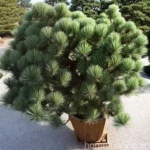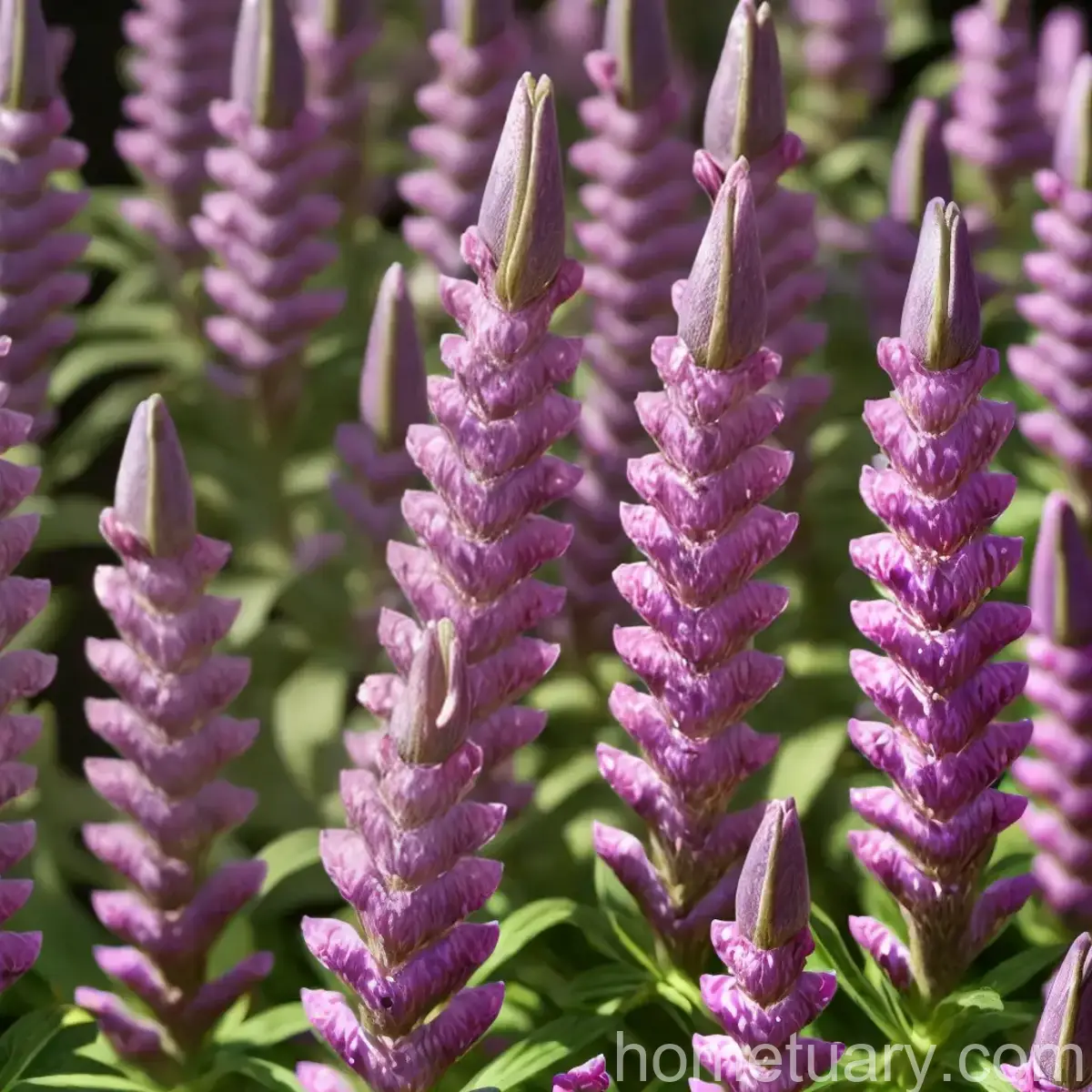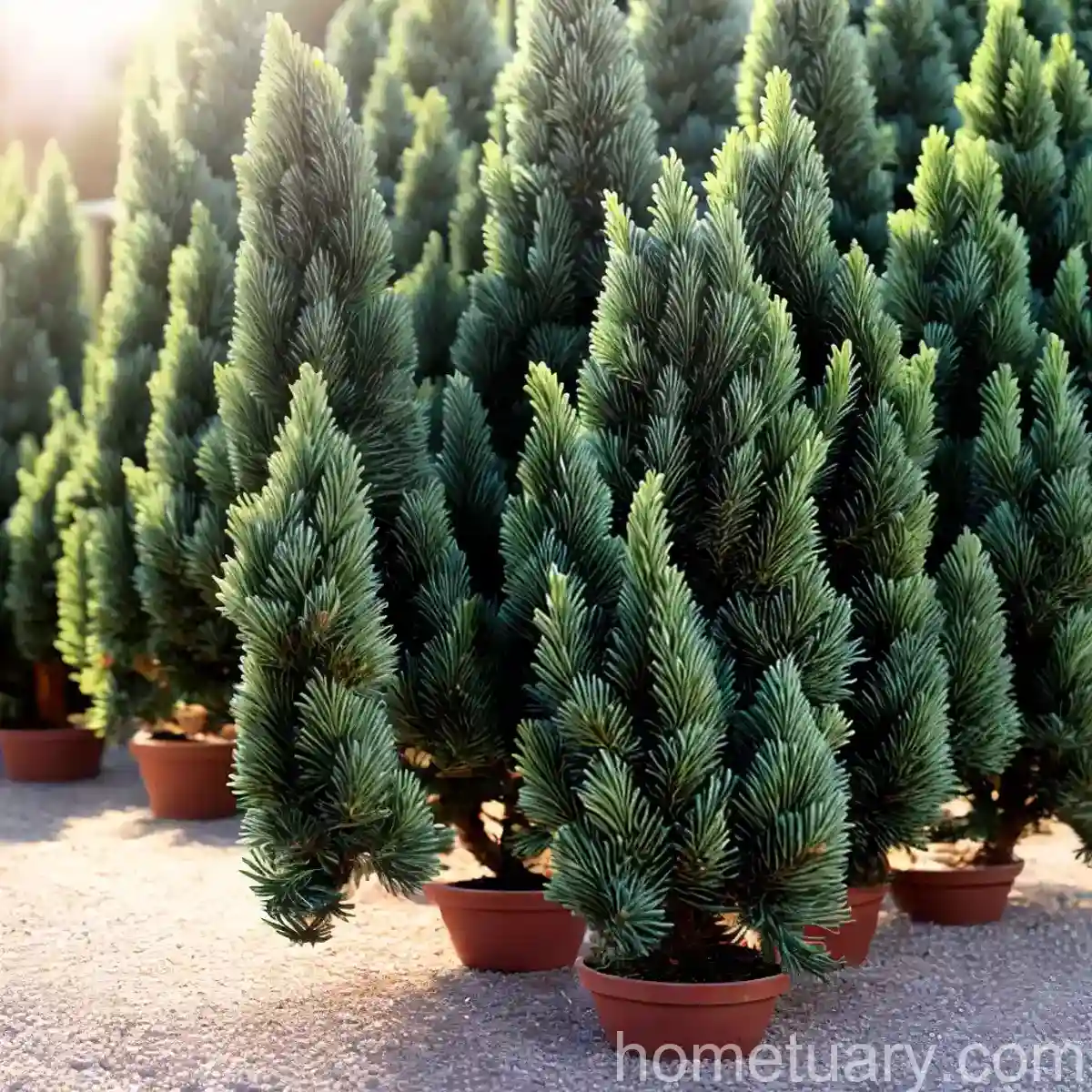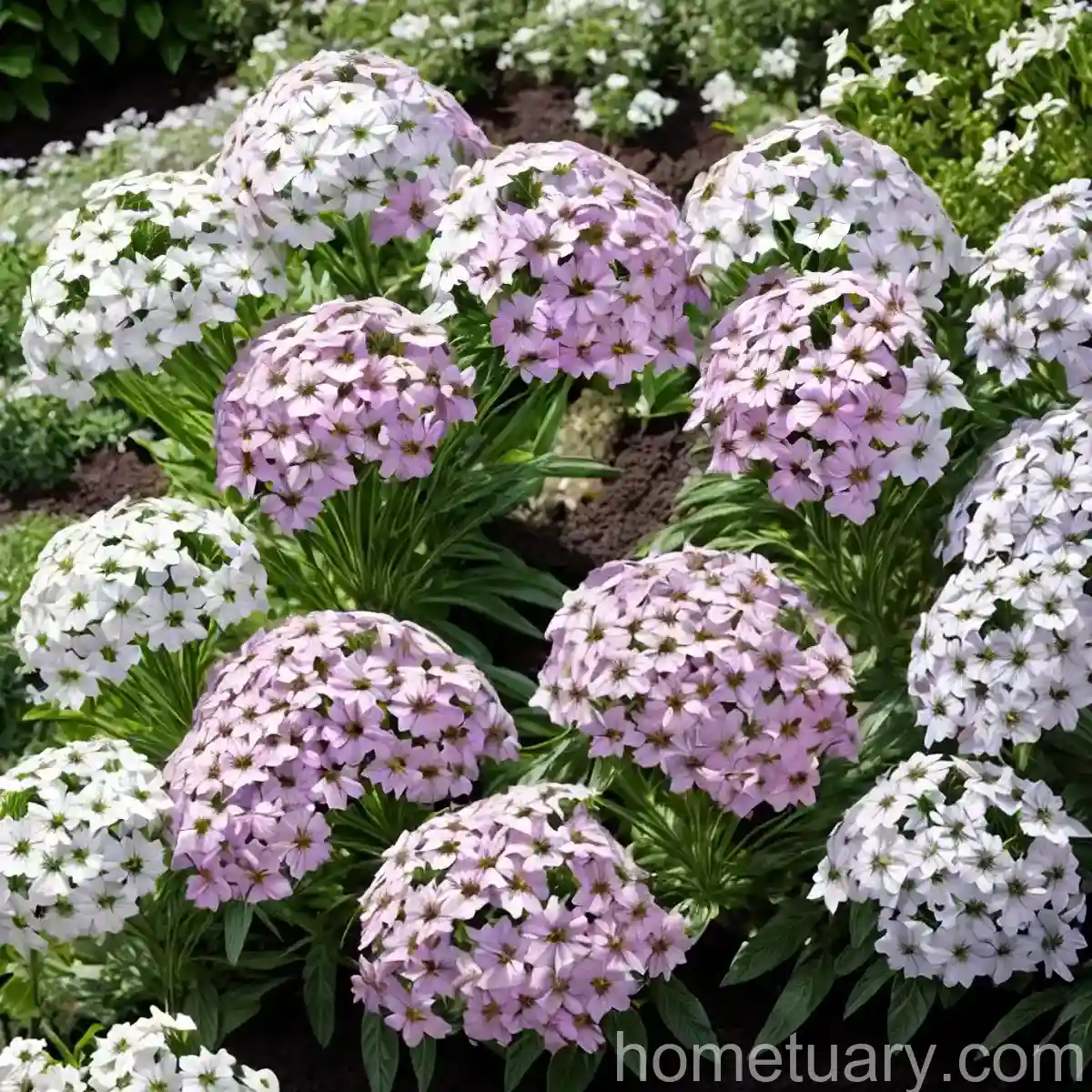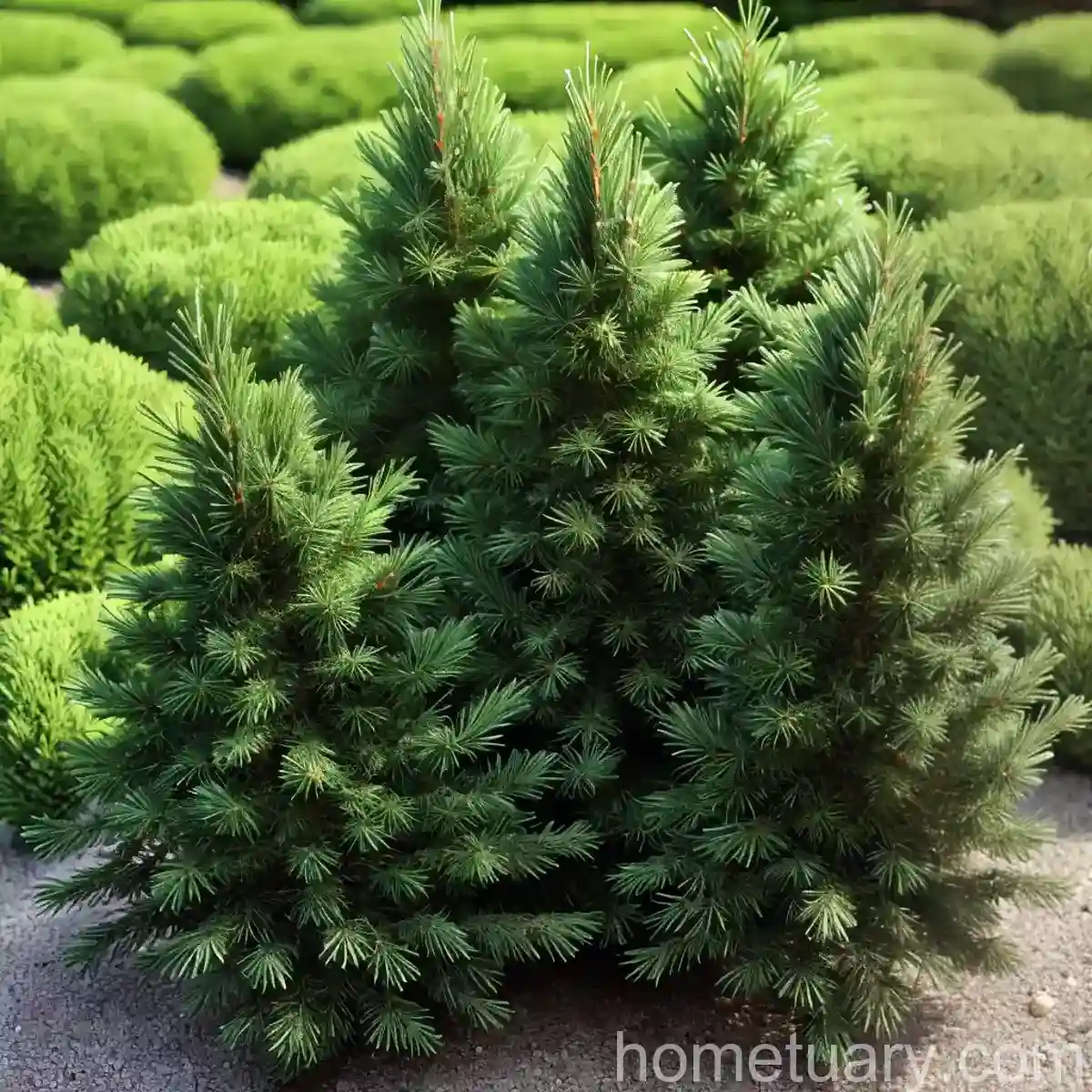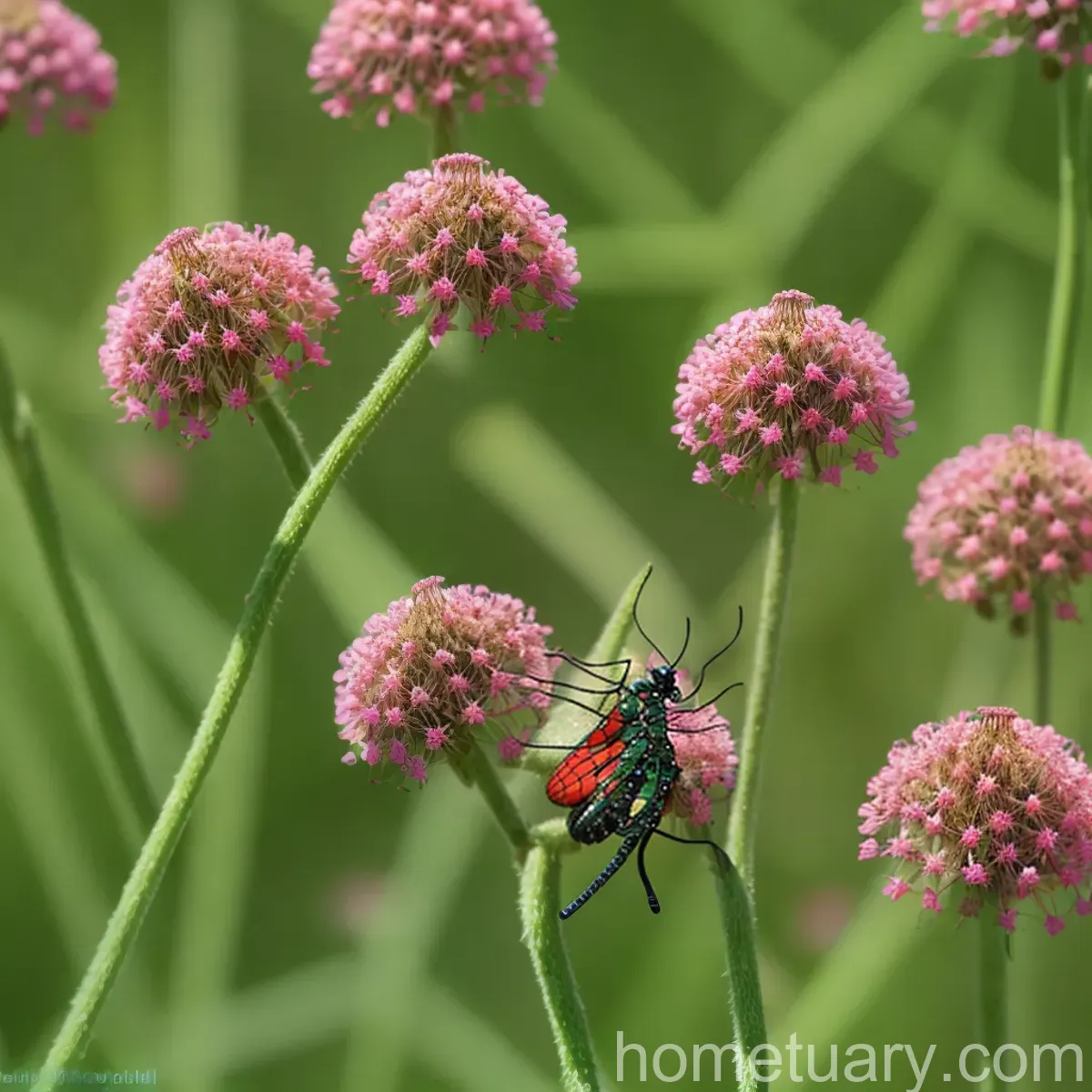Eastern White Pine (Pinus strobus ‘Horsford’): A Comprehensive Guide
In the world of horticulture, the diversity of plant species is truly astounding. Amongst the vast array of plants, trees have always held a special place in human societies and ecosystems. Trees, with their grandeur and longevity, have been revered by civilizations throughout history. One such remarkable tree is the Eastern white pine (Pinus strobus), which, in its cultivated variety, ‘Horsford’, has become popular in landscaping and gardening. In this comprehensive guide, we will delve into the world of the Eastern white pine (Pinus strobus ‘Horsford’), exploring its characteristics, cultivation, uses, care requirements, and much more.
What is Eastern White Pine (Pinus strobus ‘Horsford’)?
The Eastern white pine, scientifically known as Pinus strobus, is a large coniferous tree native to eastern North America. It is recognized for its soft, flexible needles, rapid growth, and towering height, often reaching 50-80 feet tall with a spread of 20-40 feet. The ‘Horsford’ variety of the Eastern white pine exhibits some specific traits that distinguish it within the species. This variety is admired for its compact size, making it an ideal choice for smaller gardens and landscapes.

Key Takeaways – Eastern White Pine (Pinus strobus ‘Horsford’)
Before venturing into the specific aspects of caring for the Eastern white pine ‘Horsford’, let’s briefly touch upon some key takeaways that will be explored in detail in this guide:
- Eastern White Pine Care: Understanding the specific care requirements of the ‘Horsford’ variety.
- Pinus strobus ‘Horsford’ Characteristics: Exploring the unique traits and characteristics of this cultivated variety.
- Growing Eastern White Pines: Guidelines for successfully cultivating Eastern white pines, particularly the ‘Horsford’ variety.
- Eastern White Pine Varieties: An overview of different cultivated varieties within the Eastern white pine species.
- Pinus strobus ‘Horsford’ Pruning Tips: Guidance on maintaining the ‘Horsford’ variety through proper pruning techniques.
- How to Propagate Eastern White Pine: Insights into propagating Eastern white pines, including the ‘Horsford’ cultivar.
- Eastern White Pine Diseases and Pests: Understanding common disease and pest issues and how to manage them.
- Pinus strobus ‘Horsford’ Maintenance: Essential tips for the ongoing care and maintenance of the ‘Horsford’ variety.
- Best Soil for Eastern White Pine: Recommendations for soil types that promote optimal growth.
- Growing Pinus strobus ‘Horsford’ from Seed: Guidelines for propagating ‘Horsford’ from seeds.
- Eastern White Pine Watering Requirements: Understanding the water needs of the Eastern white pine, including the ‘Horsford’ variety.
- Pinus strobus ‘Horsford’ Sunlight Needs: Insight into the sunlight preferences of the ‘Horsford’ variety.
- Eastern White Pine Landscaping Ideas: Creative landscaping approaches involving Eastern white pines.
- Pinus strobus ‘Horsford’ Growth Rate: Understanding the growth patterns and rates of the ‘Horsford’ variety.
- Eastern White Pine Winter Care: Tips for winter maintenance and protection of Eastern white pines, including ‘Horsford’.
- Pinus strobus ‘Horsford’ Foliage Color: Description of the foliage color and seasonal changes in the ‘Horsford’ variety.
- Eastern White Pine Companion Plants: Suitable companion plants to be grown alongside Eastern white pines.
- Pinus strobus ‘Horsford’ Container Gardening: Guidelines for growing the ‘Horsford’ variety in containers.
- Eastern White Pine Leaf Drop: Understanding the leaf drop patterns and management.
- Pinus strobus ‘Horsford’ Root System: Insights into the root structure and depth of the ‘Horsford’ variety.
- Eastern White Pine Transplanting Tips: Guidelines for successfully transplanting Eastern white pines, including ‘Horsford’.
- Pinus strobus ‘Horsford’ Bark Description: Description of the unique bark features of the ‘Horsford’ variety.
- Eastern White Pine Root Diseases: Common root diseases and their management in Eastern white pines.
- Pinus strobus ‘Horsford’ Pollination: Insights into the reproductive mechanisms and pollination of the ‘Horsford’ variety.
- Eastern White Pine Seasonal Changes: Understanding the seasonal variations and responses in Eastern white pines.
- Pinus strobus ‘Horsford’ Needle Arrangement: Description of the needle arrangement characteristic to the ‘Horsford’ variety.
- Eastern White Pine Uses in Landscape Design: Creative applications of Eastern white pines, especially the ‘Horsford’ variety, in landscaping.
- Pinus strobus ‘Horsford’ Growth Habit: Understanding the growth habits and form of the ‘Horsford’ variety.
- Eastern White Pine Native Habitat: Insight into the native environments and habitats of Eastern white pines, including ‘Horsford’.
- Pinus strobus ‘Horsford’ Container Care: Specific care guidelines for ‘Horsford’ when grown in containers.
- Eastern White Pine Wind Protection: Techniques for protecting Eastern white pines, including ‘Horsford’, from wind damage.
- Pinus strobus ‘Horsford’ Pine Cones: Description and significance of the pine cones produced by the ‘Horsford’ variety.
- Eastern White Pine Mulching Techniques: Guidelines for mulching practices to benefit Eastern white pines, including ‘Horsford’.
- Pinus strobus ‘Horsford’ Pruning Schedule: Specific schedules and tips for pruning the ‘Horsford’ variety.
- Eastern White Pine Soil pH Requirements: Understanding the optimal soil pH for the successful growth of Eastern white pines, including ‘Horsford’.
- Pinus strobus ‘Horsford’ Cold Hardiness: Insights into the cold tolerance and hardiness of the ‘Horsford’ variety.
- Eastern White Pine Benefits to Wildlife: Understanding the ecological importance and benefits of Eastern white pines, including ‘Horsford’, to wildlife.
- Pinus strobus ‘Horsford’ Wood Properties: Description of the wood properties of the ‘Horsford’ variety.
- Eastern White Pine Landscaping Uses: Diverse applications and uses of Eastern white pines, particularly the ‘Horsford’ variety, in landscaping.
- Pinus strobus ‘Horsford’ Root Depth: Insight into the depth and spread of the root system of the ‘Horsford’ variety.
- Eastern White Pine Leaf Diseases: Common leaf diseases in Eastern white pines and their management.
- Pinus strobus ‘Horsford’ Drought Tolerance: Understanding the drought tolerance of the ‘Horsford’ variety.
- Eastern White Pine Tree Shape: Description of the natural form and shape of Eastern white pines, including ‘Horsford’.
- Pinus strobus ‘Horsford’ Windbreak Uses: Utilizing the ‘Horsford’ variety for windbreak and shelterbelt purposes.
- Eastern White Pine Needle Drop: Understanding the seasonal needle drop patterns of Eastern white pines, including ‘Horsford’.
- Pinus strobus ‘Horsford’ Flowering Season: Description of the flowering season and characteristics of the ‘Horsford’ variety.
- Eastern White Pine Soil Drainage Needs: Understanding the optimal soil drainage requirements for Eastern white pines, including ‘Horsford’.
- Pinus strobus ‘Horsford’ Evergreen Tree: Recognition of the ‘Horsford’ variety as an evergreen tree species.
- Eastern White Pine Growth Patterns: Understanding the growth patterns and formative characteristics of Eastern white pines.
- Pinus strobus ‘Horsford’ Wildlife Habitat: Insight into the role of the ‘Horsford’ variety in providing habitat and resources for wildlife.
With these key takeaways in mind, let’s embark on a journey to thoroughly understand the Eastern white pine ‘Horsford’ and its cultivation, care, and uses.
Culture
Understanding the cultural requirements of the Eastern white pine ‘Horsford’ is vital for successfully integrating it into landscapes and gardens. The culture, in this context, encompasses the broader environmental and situational elements that contribute to the plant’s overall well-being.
Water
Water is an essential element for the growth and sustenance of any plant, and the Eastern white pine ‘Horsford’ is no exception. Understanding its watering requirements is crucial for maintaining its health and vigor.
-
Watering Requirements: The ‘Horsford’ variety prefers moist, well-drained soil. While it can tolerate occasional dry spells once established, regular watering, especially during dry periods, is essential for promoting healthy growth and foliage.
-
Seasonal Variation: Adjust the watering frequency to accommodate seasonal changes. During hot summer months, increased watering may be necessary to prevent drought stress. In contrast, reducing watering in winter to avoid waterlogging is important.
-
Avoid Waterlogged Conditions: Ensuring proper drainage is critical to prevent waterlogged conditions, which can lead to root rot and other complications.
-
Mulching: Applying a layer of mulch around the base of the tree can help retain soil moisture and reduce water loss through evaporation.
Sunlight
As with most plants, sunlight plays a pivotal role in the growth and development of the Eastern white pine ‘Horsford’.
-
Sunlight Requirements: The ‘Horsford’ variety thrives in full sun to partial shade. While it can tolerate shaded conditions, optimal growth and density of foliage are achieved in full sun.
-
Site Selection: When selecting a site for planting, consider the exposure to sunlight throughout the day and ensure it aligns with the ‘Horsford’ variety’s preferences.
-
Shade Protection: In regions with intense sunlight and heat, providing some shade during the hottest part of the day can help prevent stress and sunburn on the foliage.
Fertilizer
Appropriate fertilization can significantly impact the health and vitality of the Eastern white pine ‘Horsford’.
-
Fertilization Schedule: Apply a balanced, slow-release fertilizer in spring to supply essential nutrients for the growing season. Avoid excessive nitrogen, as it can lead to rapid, weak growth.
-
Avoid Fertilizer Contact: When fertilizing, ensure that the fertilizer does not come into direct contact with the trunk or foliage, as it can cause burns and damage.
-
Soil Testing: Periodic soil testing can provide insights into nutrient levels and deficiencies, facilitating tailored fertilization approaches.
Soil
The composition and quality of the soil directly influence the growth and adaptability of the Eastern white pine ‘Horsford’.
-
Soil Type: Well-drained, acidic soils are ideal for the ‘Horsford’ variety. It thrives in soils with a pH range of 4.5 to 6.0.
-
Soil Amendments: Amending the soil with organic matter can improve its structure and nutrient content, benefiting the overall health of the tree.
-
Avoid Compaction: Prevent soil compaction around the root zone, as it can restrict oxygen and water infiltration, adversely affecting the tree’s health.
Pruning
Pruning plays a central role in maintaining the desired form, structure, and health of the ‘Horsford’ variety.
-
Pruning Timing: Prune the ‘Horsford’ variety during late winter or early spring before new growth emerges. This timing minimizes stress and allows for rapid healing of pruning wounds.
-
Pruning Objectives: Focus on removing dead, diseased, or crossing branches. Additionally, shaping the tree to enhance its form and density can be performed during pruning.
-
Sanitization: Use sanitized pruning tools to prevent the spread of diseases and infections. Disinfecting the tools between cuts, especially when dealing with diseased branches, is crucial.
Propagation
Understanding the methods for propagating the Eastern white pine ‘Horsford’ is valuable for expanding its presence and cultivating new trees.
-
Seed Propagation: Propagating from seeds is a viable method for generating new ‘Horsford’ trees. Collect seeds from mature pine cones and sow them in a well-prepared seedbed.
-
Vegetative Propagation: Utilize techniques such as hardwood cuttings or grafting to propagate the ‘Horsford’ variety, ensuring genetic uniformity and desired traits in the offspring.
Container Popularity
The compact size and ornamental value of the ‘Horsford’ variety make it a popular choice for container gardening and urban landscapes.
-
Container Selection: Use large, sturdy containers with adequate drainage to accommodate the root system and provide stability.
-
Soil Considerations: Employ well-draining, acidic soil mixes to mimic the natural soil preferences of the ‘Horsford’ variety.
-
Watering Management: Container-grown ‘Horsford’ trees may require more frequent watering due to faster drying of the soil in containers, especially during warm, dry weather.
Common Diseases
Despite its resilience, the Eastern white pine ‘Horsford’ is susceptible to certain diseases that can impact its health and aesthetics.
Disease Diagnosis
Being able to identify and diagnose common diseases is pivotal for timely intervention and management.
-
Needle Blight: Needle blight diseases, such as Dothistroma needle blight and brown spot needle blight, can affect the foliage, leading to browning and defoliation.
-
Root Rot: Phytophthora root rot can pose a serious threat to the ‘Horsford’ variety, leading to decline and eventual death if not addressed.
-
Rust Diseases: Various rust pathogens can target the needles, causing discoloration, deformation, and premature shedding.
-
Management: Proper sanitation, timely pruning of affected branches, and, in severe cases, employing fungicidal treatments can help manage and prevent the spread of these diseases.
Common Pests
Pest infestations can pose challenges to the overall health and vigor of the Eastern white pine ‘Horsford’.
-
Adelgids: These small, sap-sucking insects can infest the ‘Horsford’ variety, leading to reduced growth and vigor.
-
Sawfly Larvae: The larvae of sawflies can cause defoliation, impacting the aesthetics and health of the tree.
-
Bark Beetles: Certain bark beetle species can target weakened or stressed ‘Horsford’ trees, leading to damage and potential mortality.
-
Integrated Pest Management (IPM): Employing IPM strategies, including biological control agents, monitoring, and targeted pesticide applications, can effectively manage pest populations.
Botanist’s Tips
Seasoned botanists and horticulturists often share invaluable insights based on their experiences with plant species like the Eastern white pine ‘Horsford’. Here are some tips and recommendations garnered from their expertise:
-
Site Selection: Choose a site that offers ample space for the ‘Horsford’ variety to reach its full potential without being constrained by overhead structures or neighboring plants.
-
Monitoring for Diseases and Pests: Regularly monitor the tree for signs of diseases and pests, enabling early intervention and management.
-
Mulching Benefits: Emphasize the advantages of mulching in regulating soil moisture, enhancing soil structure, and insulating the root system.
Fun Facts
Exploring the fascinating aspects and trivia about the Eastern white pine ‘Horsford’ can deepen the appreciation for this extraordinary tree:
- The Eastern white pine ‘Horsford’ is revered for its historical significance and traditional use in shipbuilding due to its tall, straight trunks and lightweight, yet durable, wood.
- The ‘Horsford’ variety’s compact size makes it an ideal candidate for urban landscapes and smaller gardens, offering the grandeur of a pine tree in a more manageable form.
Links to External Resources
For further exploration and in-depth information on Eastern white pine ‘Horsford’ and related topics, the following resources are recommended:
- The Tree Center – Eastern White Pine (Pinus strobus)
- University of Florida IFAS Extension – Pine Diseases
- USDA Forest Service – Eastern White Pine
By delving into the intricacies of the Eastern white pine ‘Horsford’, we gain a profound understanding of its unique characteristics, care requirements, and significance in the realm of horticulture. By integrating this knowledge into our approach to cultivating and caring for this remarkable tree, we can foster its resilience, beauty, and ecological contributions in our landscapes and beyond. Whether as a towering, stately presence in a vast garden or an ornamental centerpiece in a container, the Eastern white pine ‘Horsford’ continues to captivate and inspire plant enthusiasts and nature lovers alike.
Cultivate, Care, and Celebrate the Eastern White Pine ‘Horsford’ – A Timeless Icon of the Natural World!




